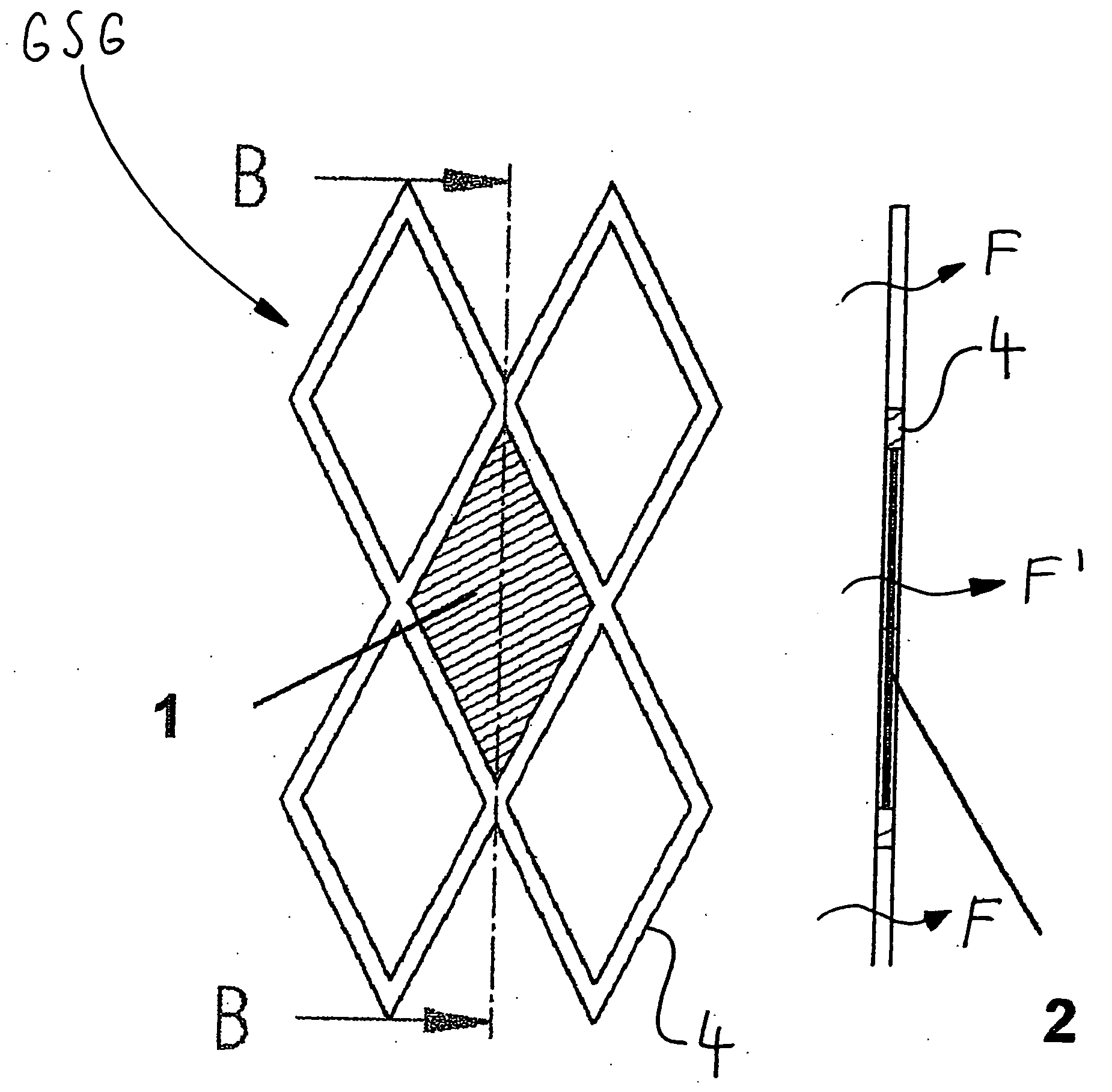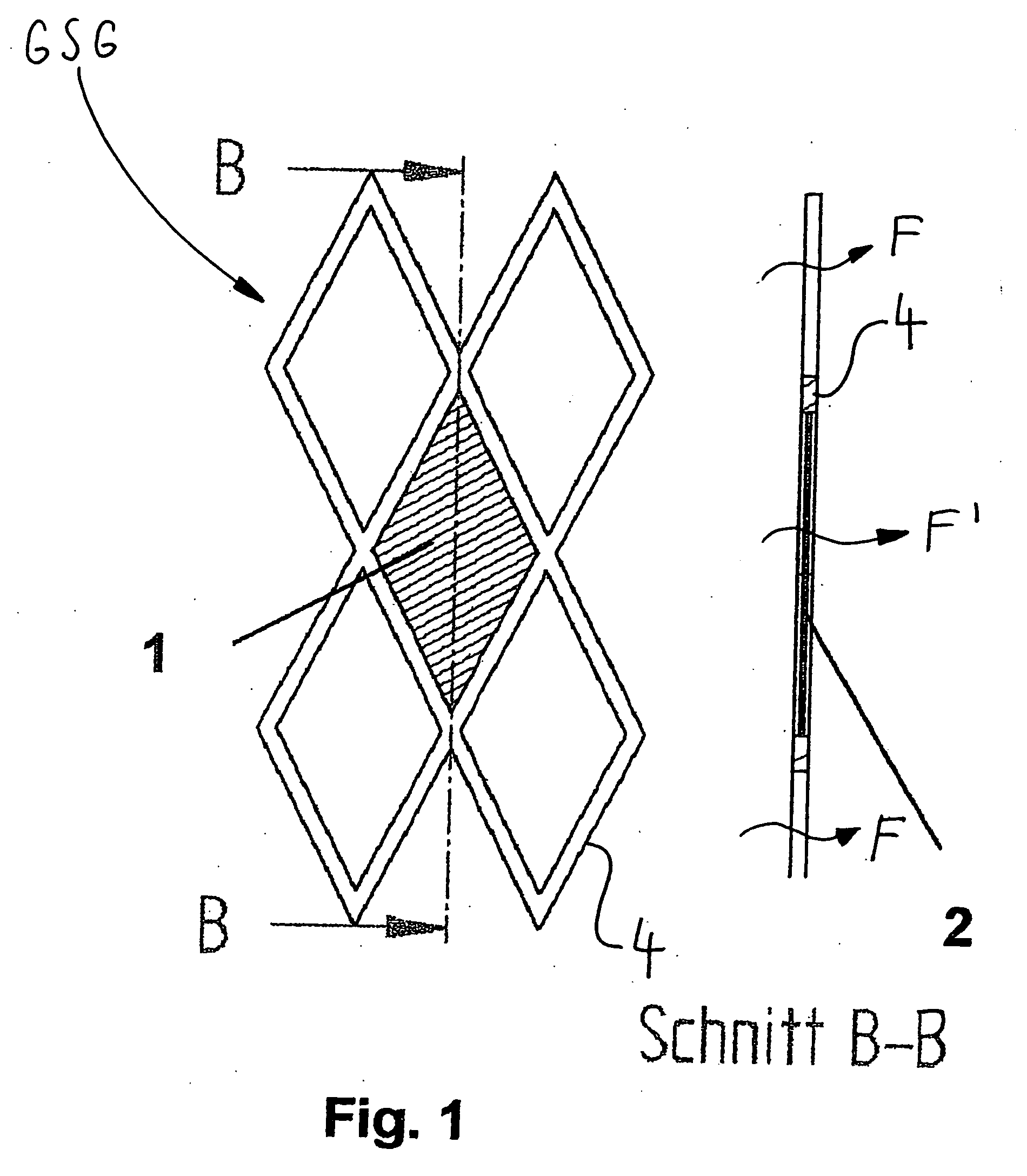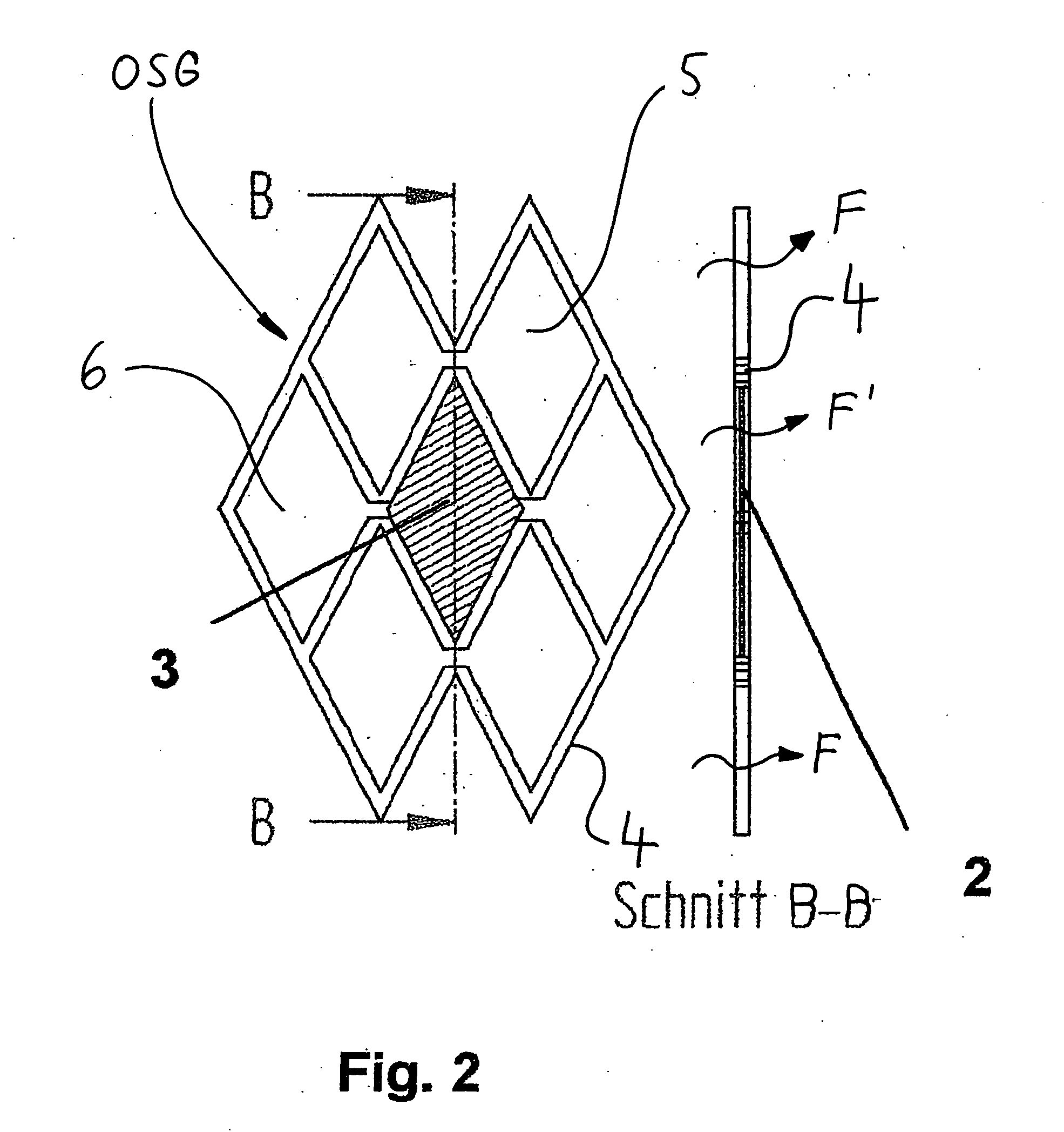Stent
- Summary
- Abstract
- Description
- Claims
- Application Information
AI Technical Summary
Benefits of technology
Problems solved by technology
Method used
Image
Examples
Embodiment Construction
[0034] As shown in FIGS. 1 and 2, an aneurysm stent according to the invention has a covered stent cell 1, 3 which is at least partially covered by a membrane 2 by the fact that the membrane 2 is inserted into the stent cell 1, 3 and is attached to the webs 4 of the cell 1, 3. The configuration of the membrane 2 to form a partially covered stent is possible for a stent having a closed stent cell geometry CSG, as shown in FIG. 1, as well as for a stent having an open stent cell geometry OSG, as shown in FIG. 2. The open stent cell geometry OSG may have two, three, or more stent cells 3. FIG. 2 shows an open stent cell geometry OSG having two connected stent cells, i.e., open stent cells 5 and an open stent cell geometry OSG, with three connected stent cells 6.
[0035] The stent has essentially unhindered fluid permeability in the radial direction through its non-covered stent cells, as indicated by F in FIGS. 1 and 2, and has reduced, eliminated, or interrupted fluid permeability in t...
PUM
 Login to View More
Login to View More Abstract
Description
Claims
Application Information
 Login to View More
Login to View More - R&D
- Intellectual Property
- Life Sciences
- Materials
- Tech Scout
- Unparalleled Data Quality
- Higher Quality Content
- 60% Fewer Hallucinations
Browse by: Latest US Patents, China's latest patents, Technical Efficacy Thesaurus, Application Domain, Technology Topic, Popular Technical Reports.
© 2025 PatSnap. All rights reserved.Legal|Privacy policy|Modern Slavery Act Transparency Statement|Sitemap|About US| Contact US: help@patsnap.com



